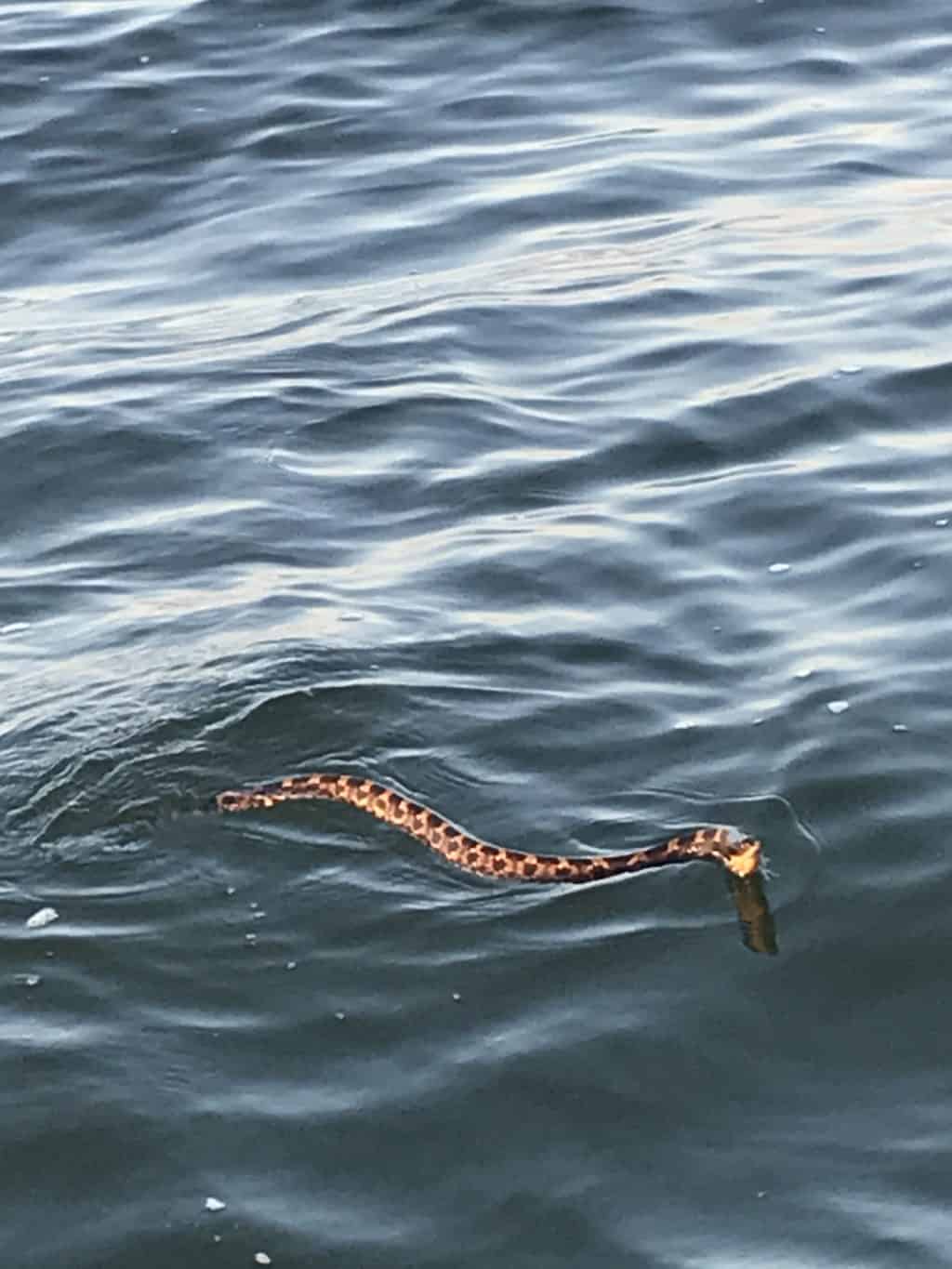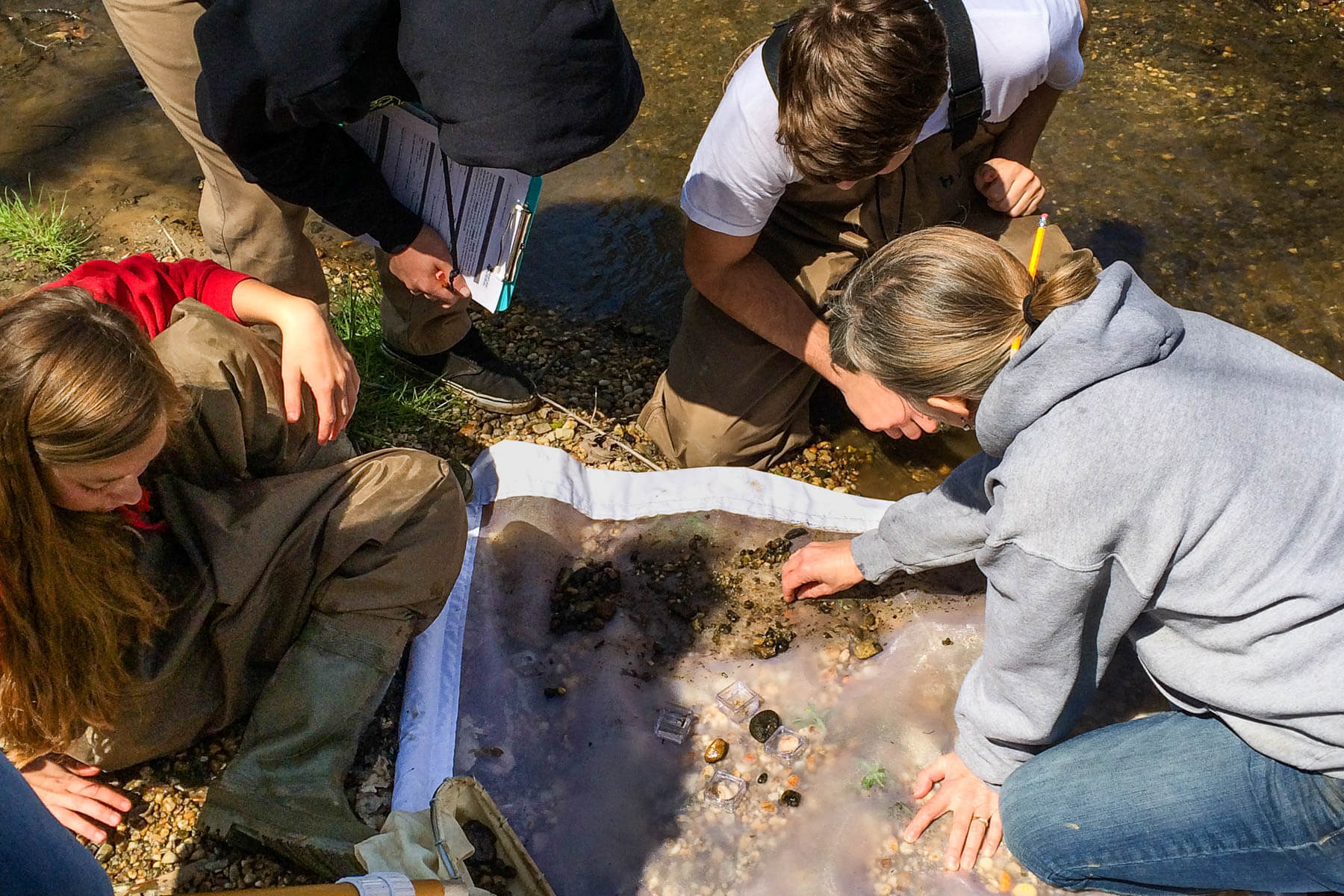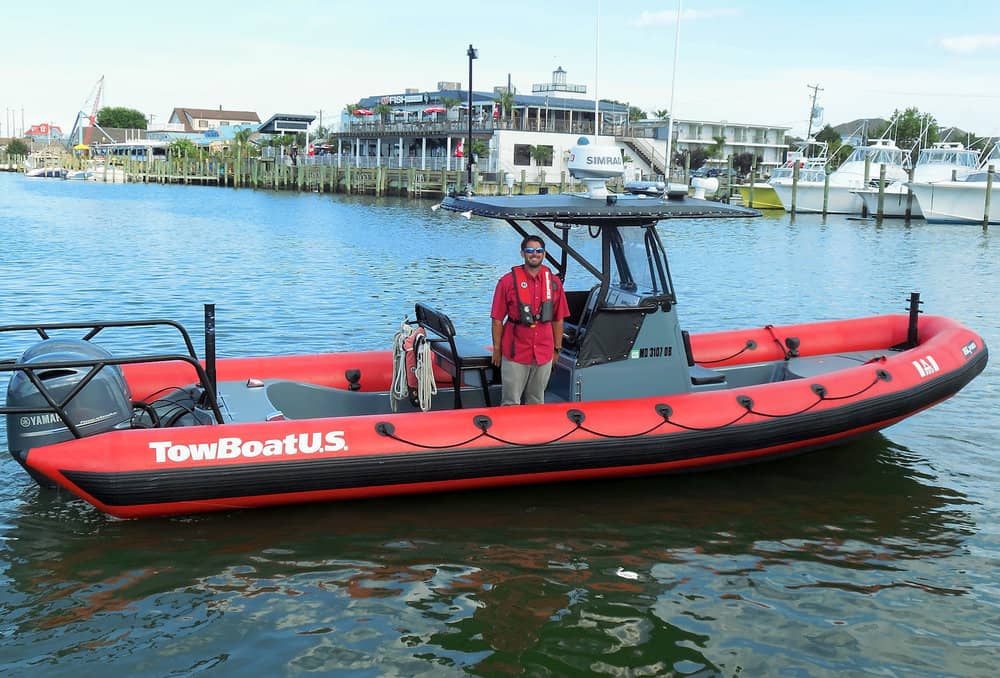A young waterman from Tangier Island recently snapped a picture that immediately stirred up questions: how does a snake manage to swim five miles away from shore?
Earlier this week, Allen Parks and his mate were crabbing five miles south of their home on Tangier Island when Allen thought he saw a floating, curved, brown stick out of the corner of his eye. Like other highline watermen, he is a keen observer of the Chesapeake, so when he saw the “stick” suddenly move, he turned back for a closer look. There, in the widest part of the open Bay, was an Eastern Hog-nosed snake, swimming toward Onancock with who-knows-what on its mind. Allen took the picture above with his phone and posted it to his Facebook page, where it produced nearly a hundred surprised comments from his followers.
J.D. Kloepfer, the herpetologist at Virginia’s Department of Wildlife Resources, identified the reptile and noted that it’s one of the few native snakes that can float while swimming.
Allen reports that Tangier has its share of black snakes, which certainly keep the island’s mouse population in check, and a few green garter snakes, but he has never seen a hog-nosed snake out there. The species is common in woods with sandy soils around the Chesapeake, mostly eats toads, and is not aggressive. It seldom ventures so far off shore.
Bill Portlock, the best snake expert on the Chesapeake Bay Foundation’s staff, theorizes that wind and current had “helped” the snake. Allen noted that the wind was coming out of the northeast around five knots, and the current had just begun to ebb when he saw the snake. Both conditions would have pushed the snake to the south from, say, Watts Island. It’s conceivable that an osprey from a nest on Tangier or Watts could have picked it up off a beach and struggled to carry it home, dropping it in the middle of Tangier Sound.
Ecologists call these unusual but not impossible journeys of wild creatures “sweepstakes dispersal”, helping spread species to new habitats. The only threat this snake may have faced in its big journey was having a cobia mistake it for an eel, one of that big brown fish’s favorite foods. Who knows where that snake has gotten to by now?
If you’re interested in finding out more about the Chesapeake’s snakes, visit
http://www.virginiaherpetologicalsociety.com/reptiles/snakes/snakes_of_virginia.html
-John Page Williams




